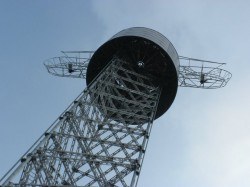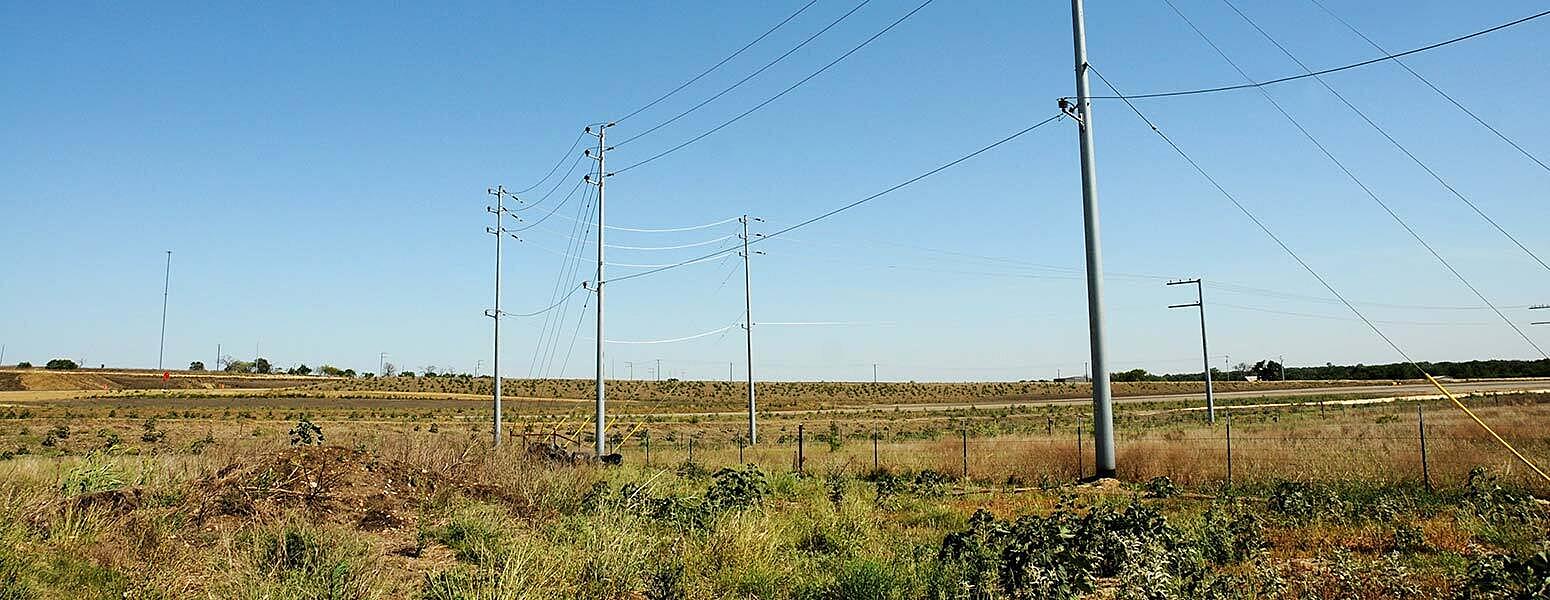Social Benefits for HDG Power Structures
The macro environment of a power facility structure is determined by its location. Whether a solar farm in a remote area, and urban transmission substation, distribution pole buried below the soil, or an offshore wind farm in fresh or salt water. All of the exterior exposed structural or tubular steel, as well as ancillary elements such as catwalks, ladders, fasteners, and railings, will be affected by the macro environment.
Each of the three macro environments (atmosphere, underground, soil, and water) have different indicators that determine the corrosivity to galvanized steel. In the atmosphere, moisture conditions, proximity to industrial pollution, and location relative to saltwater all affect overall corrosion protection afforded by the galvanized coating. On the other hand, the performance of galvanized steel buried in soil is dictated by moisture content, chloride content, and pH level, and in water exposure to the type of water as well as agitation, aeration, and temperature have the most bearing.
Because hot-dip galvanized steel provides maintenance-free corrosion protection for 70 years or more in most environments, often for the life of the plant it ensures no interruption in the plant due to maintenance or repairs. If parts constantly have to be replaced and boilers shut down to accommodate costly and time-consuming corrosion-related repairs, energy is not being provided as needed or intended. Eliminating maintenance means no additional materials, labor, or waste is created throughout its service-life, reducing environmental impacts as well.
Taking a power plants out of service for repairs would be costly and cause a gap in revenue.

Longevity
Hot-dip galvanized steel is often utilized in some of the harshest environments imaginable, yet it provides maintenance-free longevity for decades. The corrosion resistance of hot-dip galvanizing varies according to its surrounding environments. Measurements of the actual consumption rate of the coating during the first few years of service provide good data for projecting a conservative estimate for the remaining life to first maintenance, because as zinc corrosion products build on the surface, which in most environments are adherent and fairly insoluble, the corrosion rate often slows as time progresses.
Whether exposed in the atmosphere, subjected to blazing UV rays, snow, and/or other elements, submerged in water, or embedded in soil or concrete, hot-dip galvanized steel can withstand the different corrosive elements and fulfill the intended design life.
Safety
One of the top concerns of the utility industry is to safely transmit and distribute power to its customers. Hot-dip galvanized steel poles are very strong and provide consistent strength throughout the transmission and distribution grid. They can be engineered to meet specific and consistent strength ratings and are incredibly resilient in storms and other severe weather events. Even when steel poles experience loads beyond their yield strength then tend to bend and deform rather than fracture and break which provides additional protection during severe weather and catastrophic events.
Efficiencies
Steel inherently has a high strength-to-weight ration when compared to other building materials, which means you can use less material to achieve equivalent strengths. For the electrical transmission and distribution grid, this translates into longer spans between poles which ultimately requires less poles to support the same load. The increased strength of steel poles also allows for longer span in between poles which can be particularly useful when traversing roadways, rivers and other obstacles that may be in the path of the electrical gird.
Transmission & Distribution Case Study
Bluebonnet Electric Coop

Hurricane-force winds and frequent thunderstorms sometimes topple wood poles in Bluebonnet Electric Cooperative’s service territory. When severe storms rage through the region, the environmental conditions often exceed the design specifications of Bluebonnet’s electrical distribution system. When this occurs, the probability of poles failing increases significantly. In fact, in some cases, linemen have to replace multiple wood poles that have fallen in succession (Cascading failure) following a storm.
Because of these challenges Bluebonnet opted to re-pole 46,000 feet of single-phase line and 23,000 feet of three-phase overhead line to galvanized steel while also installing 30,000 feet of new single-phase line and 27,000 feet new three-phase line using galvanized steel poles. Due to steels consistency as well as failure method (which will be discussed in greater detail in a few pages) steel poles are able to withstand the extreme loading of weather events. Unlike wood poles, which can topple over in thunderstorms, the steel poles will bend instead of break. While a small percentage of the company’s steel pole system might realize severe weather, Bluebonnet is confident that should an event occur, steel poles might bend, but they will not fail catastrophically and cause widespread outages.
To date, Bluebonnet has about 480 steel poles installed, with no failures and no woodpecker damage!